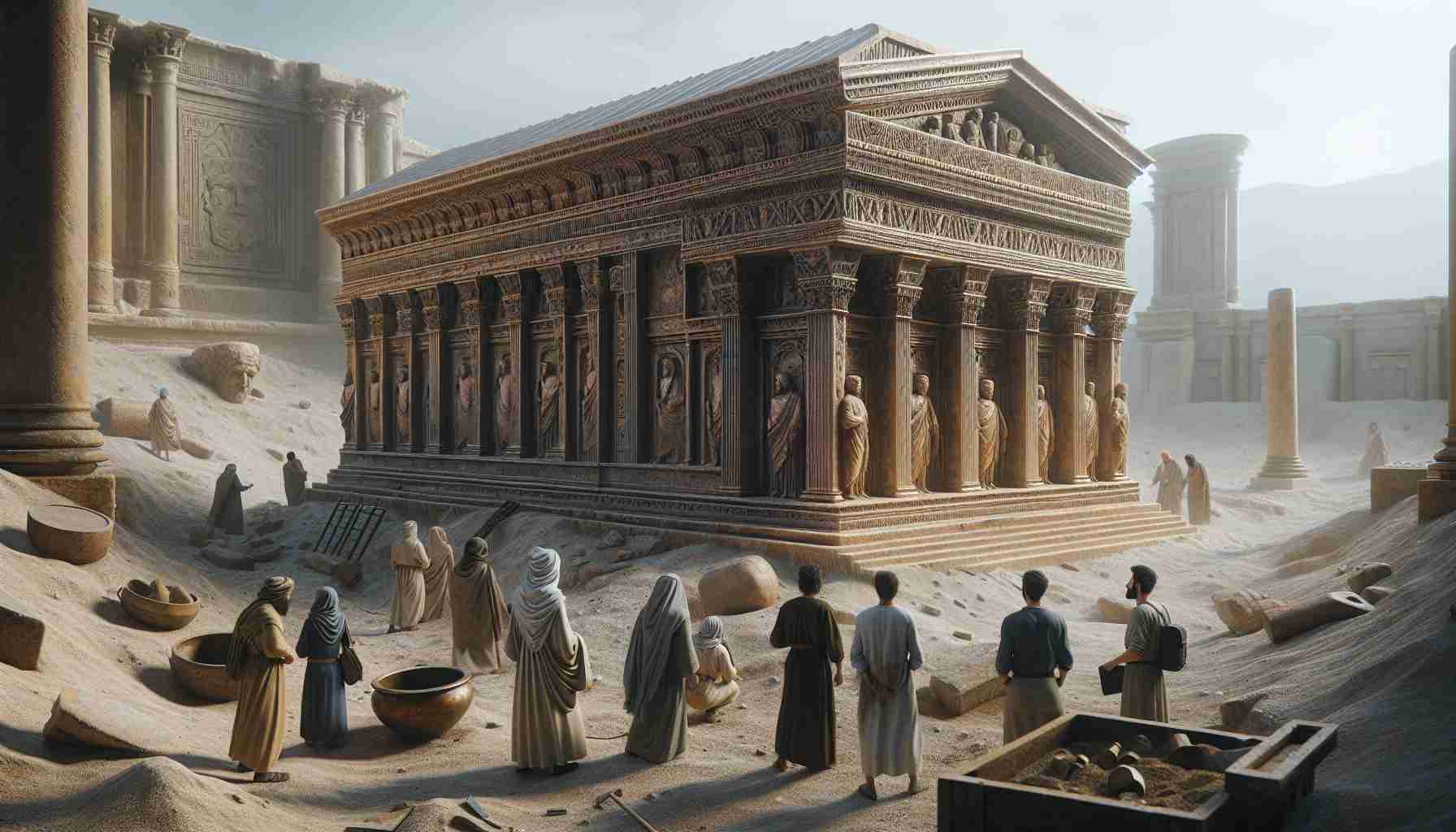- The search for Alexander the Great’s tomb is centered in modern Alexandria, specifically at Shallalat Gardens.
- Calliope Limneos-Papakosta leads the excavation, believing it to be the location of long-lost royal quarters.
- Historical evidence suggests Alexander was buried in Alexandria, with significant figures like Julius Caesar visiting the tomb.
- The burial site may have been hidden by priests to protect it from destruction during the rise of Christianity.
- There are various theories regarding the relocation of Alexander’s body across the Middle East before its final resting place in Egypt.
- Ongoing archaeological work brings the possibility of uncovering Alexander’s tomb closer to reality, potentially reshaping historical narratives.
The legendary quest to find the tomb of Alexander the Great is heating up, and the spotlight is on Calliope Limneos-Papakosta. As the Director of the Greek Research Institute on the Civilization of Alexandria, she’s convinced that the ancient ruler’s final resting place lies beneath the bustling streets of modern Alexandria.
This site holds historic significance; in 2009, her team miraculously uncovered a sculpture of Alexander, igniting renewed interest in the search for his remains.
Historical accounts underscore that Alexander was indeed buried in Alexandria, with notable visitors like Julius Caesar reportedly paying homage to his tomb. According to Limneos-Papakosta, the burial site may have been deliberately concealed by the priestly class to protect it from destruction as Christianity rose—an act of devotion for a ruler revered as a god.
Adding to the intrigue, there are theories that suggest Alexander’s body was relocated several times, journeying across the Middle East before arriving in Egypt. The path remains shrouded in mystery, with alternate claims suggesting he could be entombed in Macedonia. However, experts like Angeliki Kottaridi firmly refute this, asserting that skeletal remains in Vergina belong to Alexander’s father, Philip II.
As archaeological advances continue, the tantalizing prospect of unraveling this ancient mystery draws ever closer. Will history finally reveal the secrets of Alexander the Great’s final resting place? The journey is far from over, but the potential discoveries promise to reshape our understanding of one of history’s most iconic figures.
Uncovering Alexander the Great: The Mystery Deepens
The Quest for the Tomb of Alexander the Great
The ongoing search for the tomb of Alexander the Great has recently intensified, largely due to the efforts of Calliope Limneos-Papakosta, the Director of the Greek Research Institute on the Civilization of Alexandria. Her current focus on Shallalat Gardens, a site with historic significance near the National Museum, has garnered attention as she seeks the ancient intersection believed to hold lost royal quarters.
In 2009, discoveries at this site, including a remarkable sculpture of Alexander, reignited interest in his final resting place, leading researchers to explore various theories about his burial and possible relocations throughout history.
New Insights and Related Information
– Current Excavation Methods: Utilizing advanced ground-penetrating radar and drone technology, archaeologists are enhancing their ability to find underground structures without invasive digging, which can help locate the legendary tomb.
– Historical Significance of Alexandria: The city itself was a major center of culture and learning in the ancient world, and Alexander’s tomb would add to its historical prominence, attracting more tourism and research.
– Cultural Preservation Efforts: As excavations continue, there are ongoing discussions concerning sustainability and the preservation of the site, emphasizing the need to protect the rich history while promoting archaeological discoveries.
– Market Trends in Archaeotourism: There has been a growing interest in historical tourism, particularly in Egypt. Market forecasts indicate continued investment in archaeological sites, with a projected annual growth rate that could significantly benefit local economies.
Most Important Related Questions
1. What evidence supports the theory that Alexander’s tomb is located in Alexandria?
– Historical texts and accounts suggest that Alexander was interred in Alexandria, and the discovery of artifacts associated with his time further backs this claim. The sketchy narrative of ancient historians and the reverence with which he was treated might point to a significant burial site in the city, protected by the priestly class.
2. What are the implications of finding Alexander’s tomb for modern archaeology?
– Discovering the tomb could provide unprecedented insights into ancient burial practices, the life of Alexander, and the cultural context of his reign. It would likely attract renewed scholarly interest and tourism, inspiring further research into the Hellenistic period.
3. How are modern technologies aiding the search for ancient tombs?
– Technologies such as ground-penetrating radar, 3D mapping, and non-invasive excavation methods allow archaeologists to explore potential sites without large-scale disruptions. This advancement not only helps preserve ancient sites but also enhances the accuracy of archaeological findings.
Suggested Links
– Ancient History Encyclopedia
– Archaeology Magazine
– History Channel
The search for the tomb of Alexander the Great continues to captivate both scholars and the public alike, with new discoveries on the horizon promising to illuminate one of history’s enduring mysteries.
